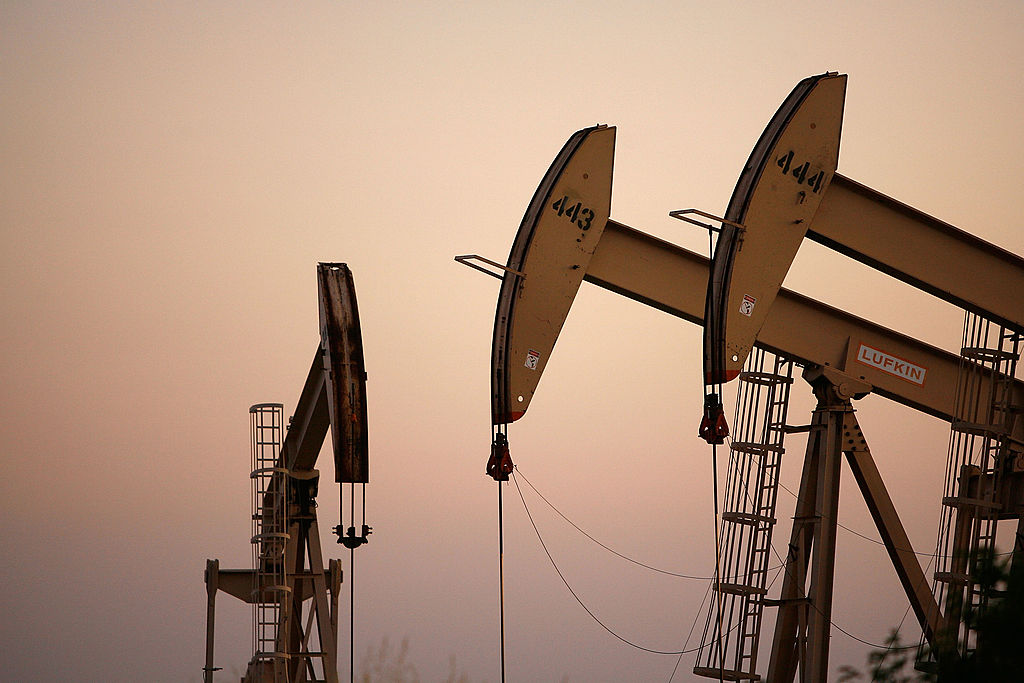
Around this time every year, companies start releasing their annual earnings reports. Based on what we’ve seen so far, for Big Oil, 2022 was a banner year. The profits alone so far declared by 10 of the largest public fossil-fuel companies totaled over $280 billion—in large part thanks to the rise in oil and gas prices spurred by Russia’s war in Ukraine.
This got us thinking: How big would Big Oil be if it were a country? To figure this out, we took a look at their annual revenue—a closer approximation to GDP than profits alone. Combined, these top 10 companies generated $2.24 trillion in revenue last year. That puts the fossil-fuel industry among the 10 highest GDP countries in the world (based on the latest World Bank figures for 2021).
As shown in the chart above, the nation of “Big Oil” would be the eighth biggest in the world, sandwiched between France and Italy.
Our calculation includes Exxon, BP, Shell, Chevron, TotalEnergies, Equinor, Marathon Petroleum, Phillips 66, and Valero. There are many other fossil-fuel companies that have yet to release their 2022 earnings statements which haven’t been factored into this. And it’s to say nothing of state-owned companies like Saudi Aramco or the China National Petroleum Corporation. Meaning the final tally is likely much, much higher.
These windfall profits, however, have come with enhanced scrutiny.
“It’s outrageous,” President Joe Biden remarked during his State of the Union address of the blockbuster profits earned during a period of crisis. Not enough was reinvested by these companies, he said, to help solve spiking energy prices. Instead, as households continue to feel the squeeze from high energy prices, fossil-fuel companies “used those record profits to buy back their own stock, rewarding their CEOs and shareholders,” Biden complained Tuesday night as he pledged to prioritize higher corporate taxes in the year ahead.
On top of this, BP—which brought in a revenue of nearly $250 billion last year for a record net profit of $27.7 billion—has now said that rather than prioritizing the supposed goal of its 2000 rebranding from British Petroleum to Beyond Petroleum, it will be doubling down on more oil and gas extraction. As the New York Times reported this week, BP chief executive Bernard Looney said: “The conversation three or four years ago was somewhat singular around cleaner energy, lower-carbon energy. Today there is much more conversation about energy security, energy affordability.”
But all of this comes at a time when scientists, many government leaders, and a growing share of the business community agree a rapid clean energy transition is essential to tackling climate change—and as renewables are becoming increasingly popular and cost effective. As the International Energy Agency (IEA) noted last year, wind and solar power remain competitive against rising costs of fossil fuel energy sources. And a new analysis this week by Carbon Brief based IEA data shows renewables, plus nuclear power, will be able to cover nearly all expected growth in global electricity demand through 2025.
As head of the IEA, Fatih Birol, told my colleague Justin Worland last year: “Looking at all the numbers day by day across the world, I see a new global energy economy is emerging. This is wind, this is efficiency, this is heat pumps, this is nuclear power, this is hydrogen, and others.”
More Must-Reads from TIME
- L.A. Fires Show Reality of 1.5°C of Warming
- Home Losses From L.A. Fires Hasten ‘An Uninsurable Future’
- The Women Refusing to Participate in Trump’s Economy
- Bad Bunny On Heartbreak and New Album
- How to Dress Warmly for Cold Weather
- We’re Lucky to Have Been Alive in the Age of David Lynch
- The Motivational Trick That Makes You Exercise Harder
- Column: No One Won The War in Gaza
Contact us at [email protected]